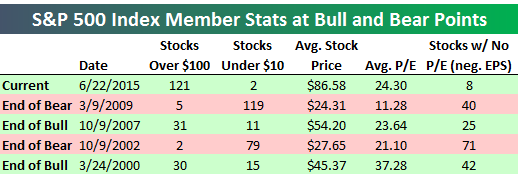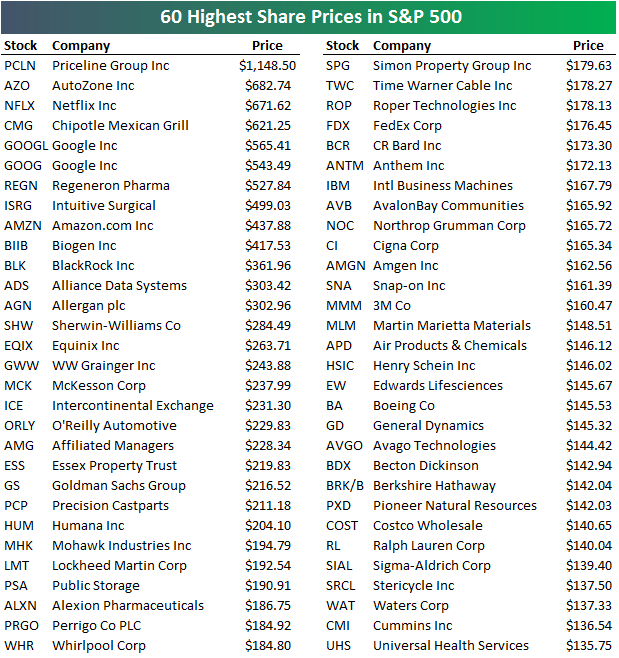On top of concerns about the stock market’s high relative valuations and flagging corporate earnings, here’s one more thing to worry about: There are now 121 stocks in the S&P 500 Index with share prices of $100-plus.
The analysts at Bespoke Investment Group say “there has never been more shares trading” above that threshold in stock market history.

Striking Trend
While Bespoke is quick to point out there’s no correlation between individual share price and valuation, the trend is striking.
That’s especially true given that the average S&P 500 stock trades at $86.58 per share with a price-to-earnings ratio of 24.30.
There were just roughly 30 stocks trading above the $100 per share mark at the end of the bull markets in 2007 and 2000.

Mighty Bull
Maybe it’s all backhanded compliment to the powerful bull market that took flight back in March of 2009, though a lot of the gains owe much to ultra-loose monetary policy by the US Federal Reserve.
The S&P 500’s advance of more than 200% is also more than double the median bull gain of 101.5%.
Now take a look at the 60 highest share prices in the S&P 500 as of June 23.
Leading the pack is Priceline (PCLN) at $1,148, followed by AutoZone (AZO) at $682, Netflix (NFLX) at $671 and Chipotle (CMG) at $621.

Takeaway
Nobody knows how long the party will last.
But the outbreak of $100-plus stocks in the S&P 500 is an interesting milestone.
It may also be another indication that the six-year run of strong stock market performance may be nearing a turning point.
Stack up this bull run against previous ones going back 85 years and it’s 2 years longer than the average.
Nothing lasts forever.
Continued learning: The stock market’s fragile foundations
Photo Credit: Mike Mozart via Flickr Creative Commons
The investments discussed are held in client accounts as of June 24, 2015. These investments may or may not be currently held in client accounts. The reader should not assume that any investments identified were or will be profitable or that any investment recommendations or investment decisions we make in the future will be profitable.




